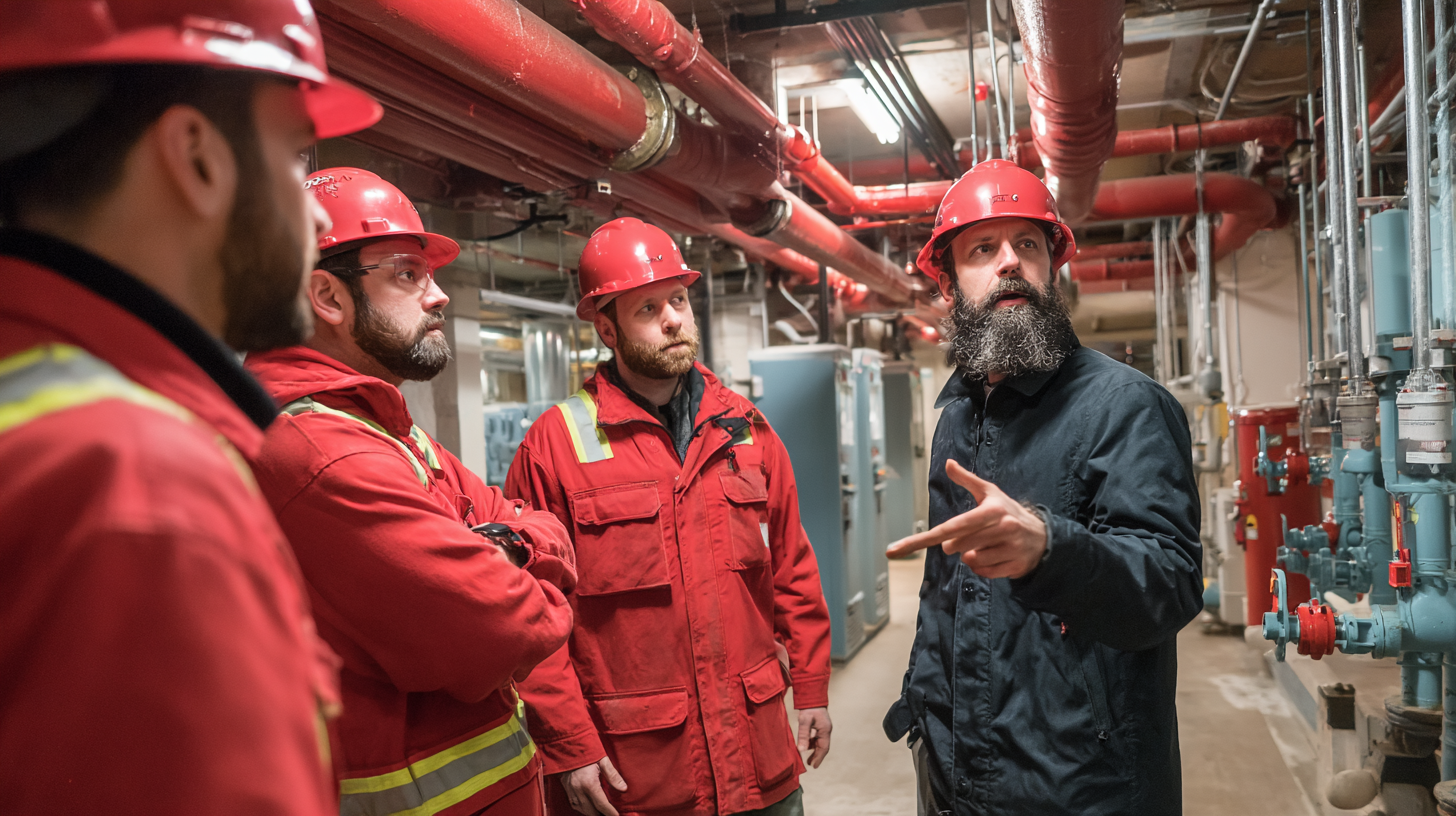Exploring Innovative Alternatives in Fire Safety Protection Solutions
In recent years, the landscape of Fire Safety Protection has evolved significantly, driven by technological advancements and innovative thinking. Traditional methods of safeguarding lives and property from fire hazards have given way to a new era where digital solutions and smart technologies play a crucial role. This blog will explore the exciting realm of innovative alternatives in fire safety protection, focusing on groundbreaking strategies and tools that enhance our capacity to prevent, detect, and respond to fire emergencies.
 We will delve into various aspects, including the integration of IoT devices, AI-driven analytics, and real-time monitoring systems, shedding light on how these developments transform our approach to fire safety. Understanding these innovations not only emphasizes the necessity of modernized fire safety measures but also underscores the imperative of proactive strategies in safeguarding communities against the ever-present threat of fire-related incidents.
We will delve into various aspects, including the integration of IoT devices, AI-driven analytics, and real-time monitoring systems, shedding light on how these developments transform our approach to fire safety. Understanding these innovations not only emphasizes the necessity of modernized fire safety measures but also underscores the imperative of proactive strategies in safeguarding communities against the ever-present threat of fire-related incidents.
Innovative Fire Suppression Technologies: A Closer Look
Innovative fire suppression technologies are rapidly evolving to meet the challenges posed by increasing wildfire incidents and urban safety needs. With millions of hectares already affected by wildfires this year, and with Western Canada facing an unprecedented fire season, the demand for advanced fire safety solutions has never been more critical. The introduction of innovative aerial fire suppression systems, including powerful helicopters capable of carrying substantial water loads and refilling quickly, represents a significant leap forward in firefighting capabilities. For instance, the recent acquisition of a new helicopter by CAL FIRE emphasizes the importance of night operations where visibility is limited, allowing for continuous fire containment efforts.
Moreover, the industry is witnessing groundbreaking advancements from companies pioneering early-detection and suppression technologies. These innovations enable quicker response times, significantly reducing the risk of fire escalation. Recent partnerships among tech firms are set to bring drone and UAS technology to the forefront of fire suppression, providing real-time monitoring and tactical support in combating wildfires. As the fire safety landscape evolves, it is essential for stakeholders to stay informed of these innovations, as they not only enhance safety measures but also contribute to more efficient resource management in an era of increasing fire risks.
Innovative Fire Suppression Technologies: A Closer Look
Smart Fire Safety Systems: Integrating IoT for Enhanced Protection
In today’s rapidly evolving technological landscape, integrating Internet of Things (IoT) capabilities into fire safety systems represents a significant advancement in protection solutions. Smart fire safety systems use interconnected devices to monitor fire hazards in real-time, providing not only immediate alerts but also comprehensive data analytics that can help prevent incidents before they escalate. This proactive approach enhances safety measures and offers peace of mind for both residential and commercial properties.
Tip: When implementing a smart fire safety system, ensure that all devices are compatible and can communicate seamlessly with each other. Regularly update the software of these systems to improve functionality and integrate new safety features.
Furthermore, the incorporation of IoT technology allows for remote monitoring and management of fire safety. Property owners can receive notifications on their smartphones or other devices, enabling them to respond swiftly to any threats. This immediate access to information makes it easier to take action, whether it’s alerting local authorities or initiating fire suppression systems to mitigate damage.
Tip: Conduct routine maintenance checks on your IoT fire safety devices to ensure they are functioning correctly. Schedule these checks at least twice a year to address any potential issues before they arise.
Exploring Innovative Alternatives in Fire Safety Protection Solutions
| Solution Type | Features | Benefits | Integration with IoT |
|---|---|---|---|
| Smart Smoke Detectors | Real-time alerts, mobile connectivity, self-testing | Early detection, remote monitoring, reduced false alarms | Connects to home networks for instant notifications |
| Connected Fire Extinguishers | Automatic usage alerts, status updates | Timely readiness notifications, enhanced compliance | Data shared with safety management systems |
| Fire Safety Management Apps | Incident reporting, evacuation planning, compliance tracking | Improved communication, accountability, and safety training | Integrates with building management systems for real-time updates |
| Automated Sprinkler Systems | Sensors for heat detection, remote control | Rapid response, reduced water damage | Connected to alarms for coordinated responses |
Eco-Friendly Fire Safety Solutions: Sustainable Materials and Methods
As the world becomes increasingly aware of environmental issues, the fire safety industry is also making strides toward eco-friendly solutions. Innovations in sustainable materials are paving the way for a new era in fire protection. For instance, manufacturers are now utilizing recycled, non-toxic substances in fire retardant products, reducing the harmful impact of traditional chemicals on both human health and the environment. These bio-based materials not only provide effective fire resistance but also contribute to a cleaner, greener planet.
In addition to materials, the methods employed in fire prevention are evolving. Modern technologies such as smart fire detection systems harness the power of AI and IoT, enhancing early warning capabilities while minimizing resource consumption. These systems can adapt to environmental changes in real-time, ensuring maximum safety with minimal environmental footprint. By integrating innovative techniques and sustainable practices, the fire safety sector is not only addressing the immediate concerns of fire hazards but also fostering a more sustainable future.
Case Studies: Successful Implementation of Advanced Fire Safety Systems
In recent years, the landscape of fire safety has evolved significantly, with many organizations implementing advanced systems to enhance protection and response capabilities. A compelling case study comes from a high-rise building in downtown Los Angeles, where traditional fire alarm systems were replaced by a state-of-the-art addressable fire alarm system integrated with a real-time building management interface. This innovative approach allowed for quicker detection and more precise location identification of potential fire hazards, leading to a marked decrease in response times during drills and actual emergencies.

Future Trends in Fire Safety: Anticipating Challenges and Innovations
In the ever-evolving landscape of fire safety, the need to anticipate upcoming challenges and embrace innovative solutions is imperative. According to the National Fire Protection Association (NFPA), fire departments in the U.S. responded to approximately 1.3 million fires in 2020 alone, underscoring the critical importance of advanced fire safety systems. As we look to the future, it is essential for organizations to adopt technologies such as IoT-enabled sensors and AI-driven predictive analytics that can significantly enhance risk assessment and emergency response capabilities.
Tip: Regularly update your fire safety protocols and technology. Incorporating advanced fire detection systems can reduce response times by up to 50%, a crucial factor in limiting fire damage and saving lives.

Furthermore, emerging technologies like drone surveillance and robotics are beginning to play a vital role in fire safety. Drones equipped with thermal imaging can provide real-time data during emergencies, ensuring quicker and more efficient fire containment. This not only enhances safety but also promotes better resource management during firefighting operations.
Tip: Invest in training your fire safety personnel on new technologies. Knowledgeable personnel are essential for maximizing the potential of innovative fire protection tools. Engaging in regular training can lead to a more adept and responsive team in crises.
